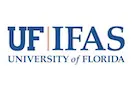In his quest to find the right drone and other artificial intelligence to help ensure citrus growers get an accurate count of their crop, Yiannis Ampatzidis and his research team have developed a system known as Agroview.
The technology saves farmers time and money and helps them accurately count their trees, which is important for insurance purposes.
The latest results of the University of Florida scientist’s research show a computerized method that counted 175,977 citrus trees on a commercial citrus farm in Hendry County at nearly 98 percent accuracy.
Ampatzidis also found that the combination of unmanned aerial vehicles (UAV) and Agroview — a novel type of cloud-based technology — counts trees and measures their canopy, which is important for farmers to maintain their insurance policies. Insurance companies need to know how many trees a farmer has – and how dense they are – so they can decide whether to renew the growers’ policies and at what price.
For the new research, Ampatzidis and his colleagues attached an imaging mechanism to a UAV, and it accurately detected citrus trees and gaps between trees in a commercial grove. Because many citrus trees are damaged or die from citrus greening disease, farmers must remove the plants from their groves. That tree removal causes gaps between trees.
His latest research, published in the journal Computers and Electronics in Agriculture, builds on a study he published last year. In the prior study, conducted on a commercial farm in Highlands County, Ampatzidis also used Agroview. For the current study, UF/IFAS researchers used Agroview again, but they utilized a less-costly camera.
The new techniques save time and money, said Ampatzidis. “We estimate the traditional tree-count procedure can cost around $14 per acre and take up to four weeks to cover 1,000 acres,” he said. “The Agroview application can be used to save the Florida citrus industry — among other industries all over the word — at least 60% of the data collection cost and 90% of the data collection time.”
The next steps for Ampatzidis and his research team are to develop yield prediction models for citrus and vegetables, disease detection models for vegetables, and nutrient prediction models for applications maps for variable rate technologies, for example, fertilizers and sprayers.
 For more information:
For more information:
Brad Buck
University of Florida
Tel: +1 (813) 757-2224
Email: [email protected]
www.blogs.ifas.ufl.edu
